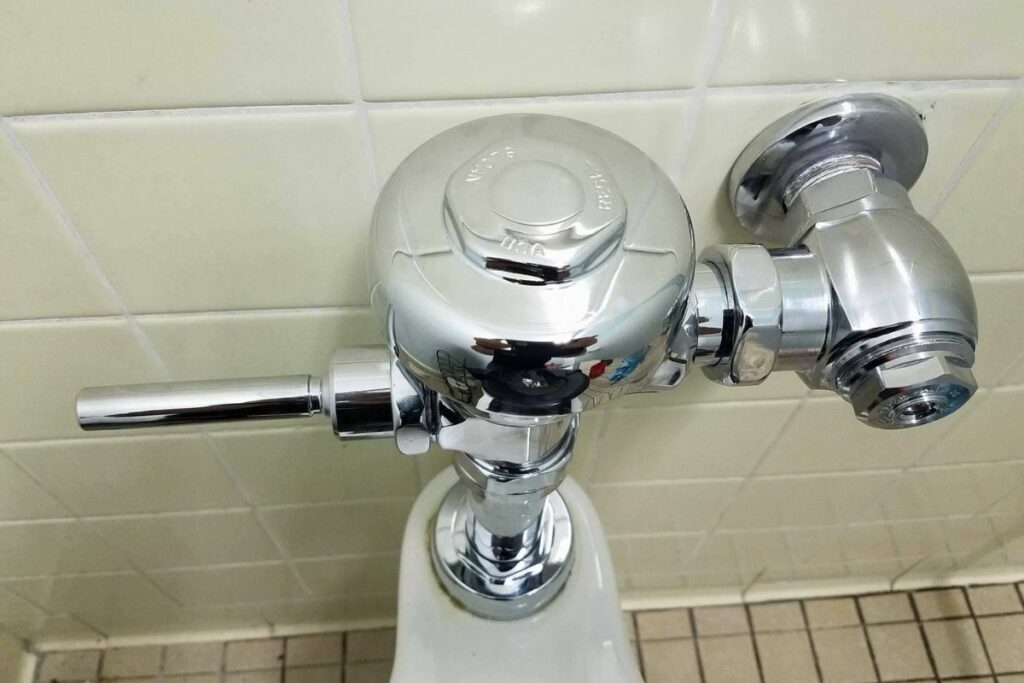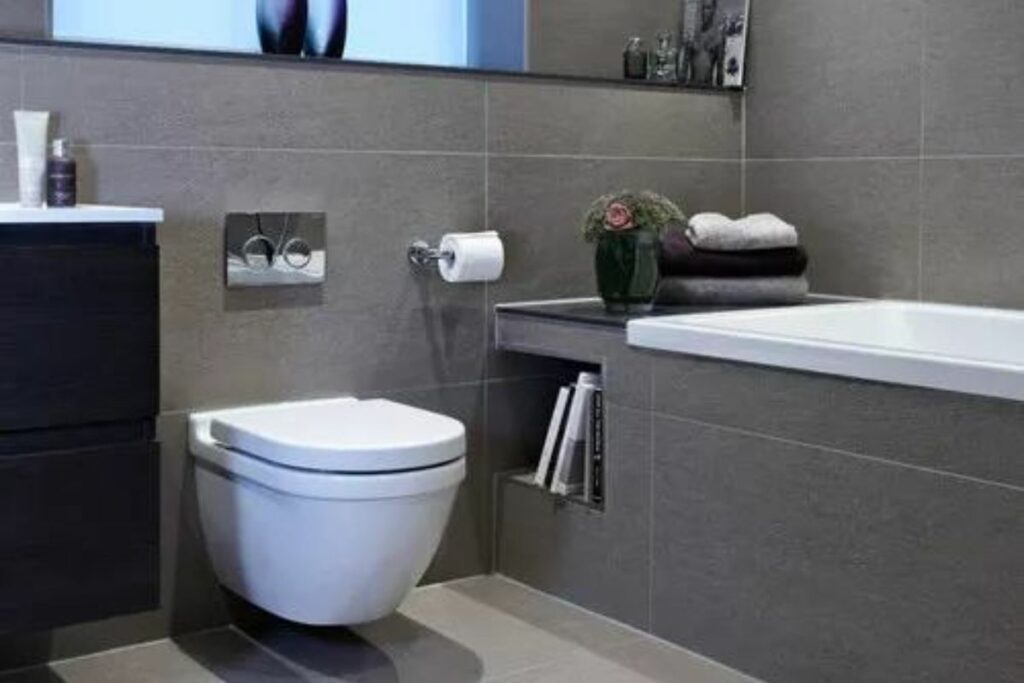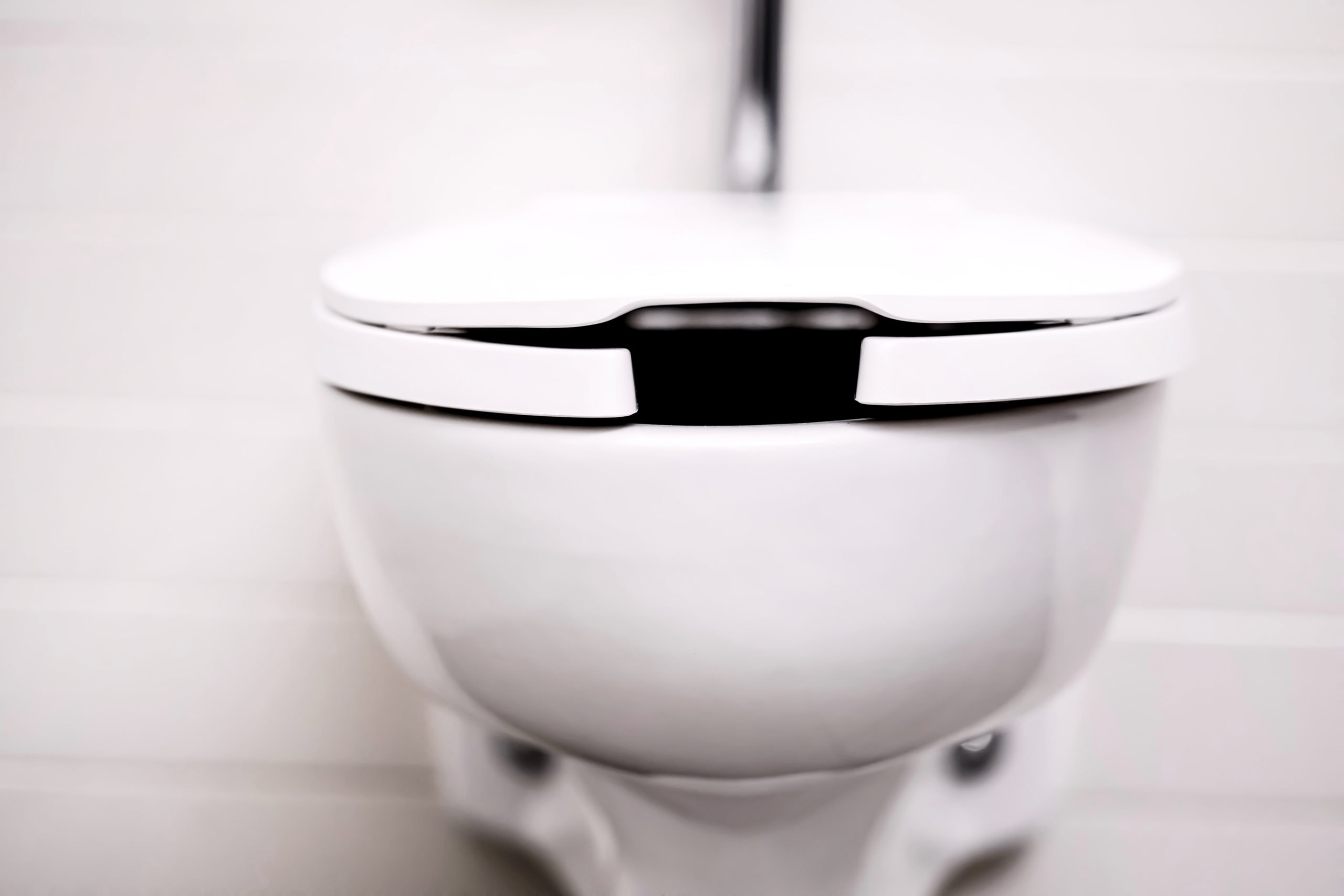You’ve probably seen them in public toilets and didn’t put too much thought into it. However, I’ve always been amazed by them and wondered how a tankless toilet works.
It uses high-pressure water connected directly to your water supply to flush the toilet clean. They use a flushometer valve upon being triggered by the flushing handle. The water from the high-pressure chamber is released and pushed to clean the toilet bowl. The water is not stored anywhere and is used on a need basis.
These toilets have their benefits as well as their drawbacks. The home versions are available, but they have their features. This article will look into all that and the difference between a tank and a tankless toilet.
How Does a Tankless Toilet Work?
As the name suggests, tankless toilets don’t store water in a reservoir. The water to the flush bowel is connected directly to the water source.
Unlike the tank toilet, the water here is connected to the drainage system directly from the source. It uses a lot of pressure to push the waste through a flushometer valve.
There are two types of flushometer valves due to their make and design. They are namely, the piston and diaphragm valves.

They both use the same concept, but the piston uses a cup to separate the high and low-pressure water chambers. The latte uses a rubber diaphragm to demarcate the two chambers.
How Does the Flushometer Valve Work?
A flushometer is a self-closing valve that uses water and the force from the flashing handle.
There are four commonly used flashing handles.
- Dual flush
- Motion sensors
- Button
- Lever
The video below highlights how the valve functions.
The flashing point releases water from the high chamber once the diaphragm is opened. With great force, it’s pushed out into the bowels and cleans the toilet.
On the other hand, the lower pressure chamber releases water to occupy the lost water from the high-pressure chamber. The diaphragm closes once the chamber is full and the toilet flushing is complete.
The water inside the valve operates at 15-20 PSI.
Tankless toilets are known to be used commercially, especially urinals. However, there are specially designed toilets for use at home. The dimensions and installation might be different and will require specialization.
Furthermore, the home version will require an additional pressure pump to push water with force and clear the waste. The pump is important since most home water supplies are often under low pressure.
Tankless vs. Tank Toilet
Aside from their main purpose, these two toilets each have their own unique qualities, making them different. However, they both use water and can be used for residential or commercial properties.
Let’s look at some of the common differences between these two toilets.
| TANKLESS | TANK | |
| Water Usage | 1.6 gallons per flush or less. | 3-5 gallons per flush. |
| Installation Process | DIY process | Complex |
| Flashing methods | high-pressure | Gravity pressure |
| Water connection | ½ “ to 1 “ | 3 to 4 “ |
Types of Tankless Toilets
Based on the design and style of mounting, we can identify three types of tankless toilets. Let’s highlight the types and mention commonly selected toilets available in the market.

- Wall-mounted toilet design
These toilets that are mounted on the wall are modern and elegant. The water tank is also built into the wall, which saves room. These toilets can be costly to purchase and install.
To complete the job, you will need to engage a skilled plumber as well as a handyman. The total cost of the wall-hung toilet rises as a result of this. Sanitizing the unit is rather simple, and it has a number of benefits.
- Swiss Madison Wall Hung Toilet Bowl-Easy to fix, great value for money, and looks great in your bathroom.
- KOHLER Veil Wall-Hung Elongated Toilet Bowl-Ease of cleaning the toilet, has a large bowl and an exceptional support team.
- Duravit D-Code washdown model – Well elongated budget-friendly toilet easy to install.
- Wall hung toilet
Back-to-wall toilets are a popular choice among modern homeowners. They save space, look good, and are easy to clean and maintain. The toilet bowl is attached to the wall, while the cistern is concealed behind a piece of furniture or within the wall. These toilets are less expensive and easier to install than those that are mounted on the wall.
- Dometic 300 Series Standard Height Toilet, White-Easy installation toilet with an adjustable pedal.
- SANIFLO Sanicompact-Dual-flush System-Residential-Impressive design, easy to install, and provides value for money.

- Intelligent toilet
The design is simple and polished. The smart toilet is designed to provide functionality while causing the least amount of disruption to the rest of the bathroom. The self-cleaning bidet nozzle uses sterilized water for increased cleanliness. All germs on the wand are removed using UV light.
The Benefits of Tankless Toilets
The basic use of a toilet has evolved to include a utility item essential for your bathroom. The tankless toilet has various benefits, as we’ll highlight below;
Water Conservation
Unlike traditional toilets, this modern convenience is equipped to use the least amount of water. Thanks to its design, the tankless toilet uses half the amount of water compared to the ancient model.
According to the household water consumption data, toilets consume more than 30% of your household water. Any savings on this reduces the water bill while conserving this scarce resource.

Spice up your bathroom
The toilets add a unique and modern feel to your restroom. The design is pleasing to the eye and allows you to choose a different mounting setup.
It’s common to find these toilets in commercial spaces, however, they are designed specifically for home users.
Ideal for small spaces
The common size averages around 25 by 28 inches from the wall. You are not limited to the design since you can opt for round or compact bowls. The connection to the water source and sewer system is not complicated.
Moreover, the toilets are comfortable and are an ideal companion for the sick and elderly.
Aside from the normal use of a toilet, there are additional features that make tankless toilets impressive. The technology of the toilet keeps on improving with new features. Below are some of the enhancements made to using the restroom.
- Noise reduction
- Heated toilet seats
- Automated air spray
- Mist massage

Built to Precise Requirements
Tankless toilets provide more flexibility when constructing or renovating a bathroom. According to consumer reports, these toilets can meet construction clearances where floor-mounted toilets may not.
Some cities require a minimum of 21 inches between the toilet and the wall. Tank-mounted toilets save as much as 10 inches of space by fitting the tank into the wall. The height of the bowl can be modified from 15 to 19 inches off the ground.
The Challenges of a Tankless Toilet
You might be wondering why most homes don’t own tankless toilets with their features and usefulness. The main challenges revolve around cost, plumbing, and design.
Reliable Power
Unlike conventional power toilets, these modern facilities require power to pump and function. You might need to increase the pressure of the water being used in the toilet, which is where an electrical pump comes in.
Some of these toilets are also electrical and require a reliable power connection. The toilets may not be appropriate for areas that experience long power outages.
Piping infrastructure
Modern toilets require strong pipes to withstand the high pressure of water. This is often costlier, especially if you are trying to change from conventional toilets. This might require you to change the whole piping system of your restroom.
High-Cost
High toilet costs, extensive installation costs, additional features, and pipe infrastructure. These are some of the common costs incurred while trying to have a tankless toilet at home.
You might incur $ 1,000 to 5,000 in pre, during, or post tankless toilets installation.
However, you might decide to have a DIY project.
Frequently Asked Questions?
Can I Put a Tankless Toilet in My Home?
While you may not be able to install a toilet exactly like the ones in your favorite restaurant, tankless toilets are a viable option for homeowners. Some types are designed exclusively for home users. However, flashing will almost certainly require the use of a pump or other technology.
Can You Flush a Tankless Toilet Without Water?
Remove the toilet seat and the toilet tank cover, Fill the container halfway with water. Your goal is to start the siphoning process as rapidly as possible. You’ll probably have to do it twice to clean the bowl.
How much does it cost to install a tankless toilet?
The average cost of a new or replacement toilet is $470. However, there are a number of factors that might drive the price up dramatically. It is usually affordable to replace a toilet with one that is identical in appearance and location. However, changing the type of toilet, adding upgrades, or altering the position and plumbing will almost certainly increase the cost.

Conclusion
While modern tankless toilets were once a favorite for commercial restrooms. Now you also have them at home.
The options available vary depending on the add-on features you prefer. The cost might be high, but the experience is invaluable.
You can decide to call in an expert or roll up your sleeves, take on the DIY project, and have the tankless toilet work in your home.

Amos Christen graduated with a bachelor’s degree in Interior Design from Drexel University — Philadelphia, PA. Since 2003, Amos has worked with top interior design professionals in this area, including architects and interior/graphic/lighting designers. As a skilled interior designer, Amos Christen is highly versed in fine arts and crafts and uses that to supplement his main area of expertise. He often publishes articles related to home décor on several websites, including Sprucetoilets.com, Sprucebathroom.com, and Mybesuitedhome.com. He also contributes to leading interior design magazines.
